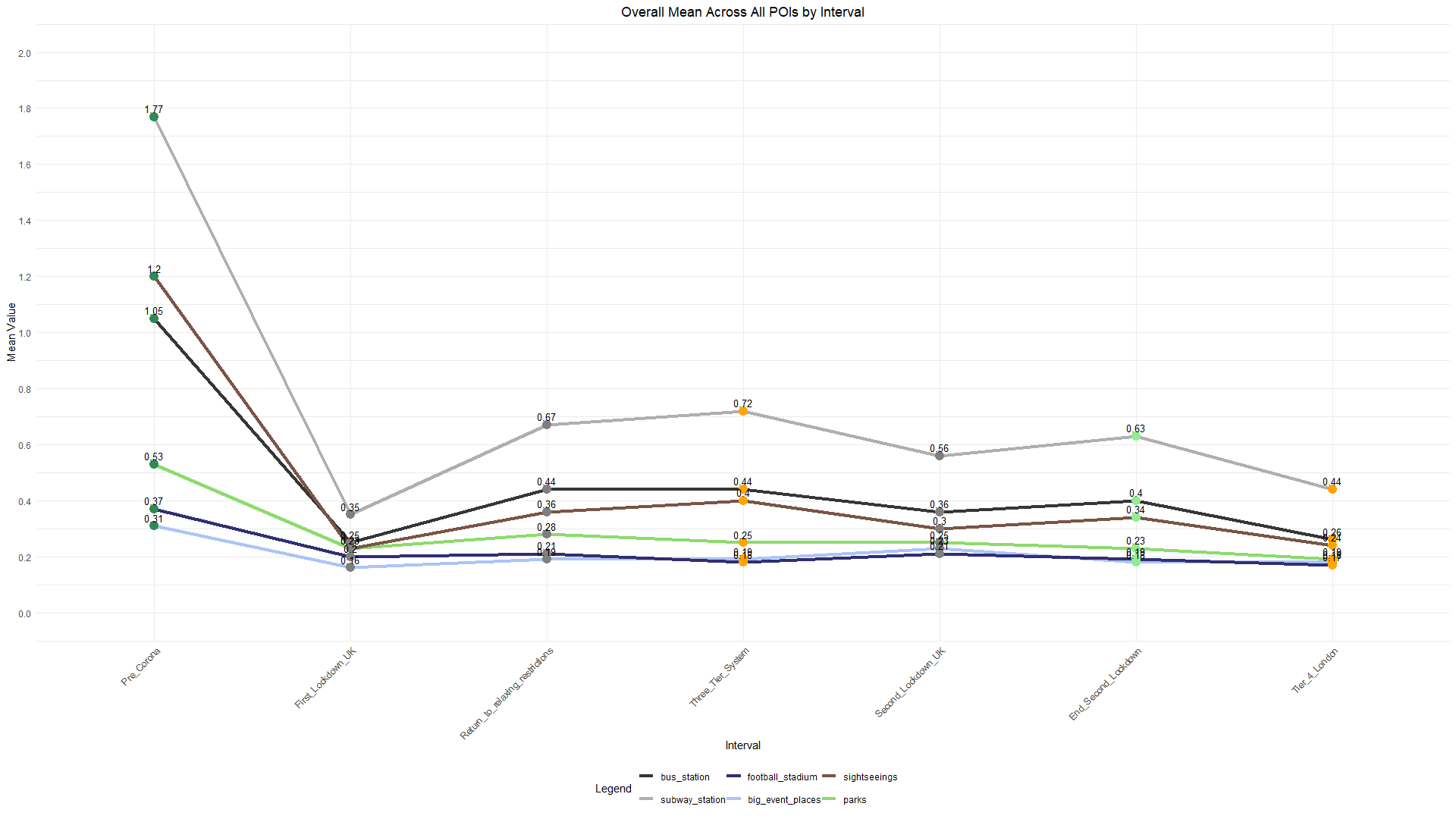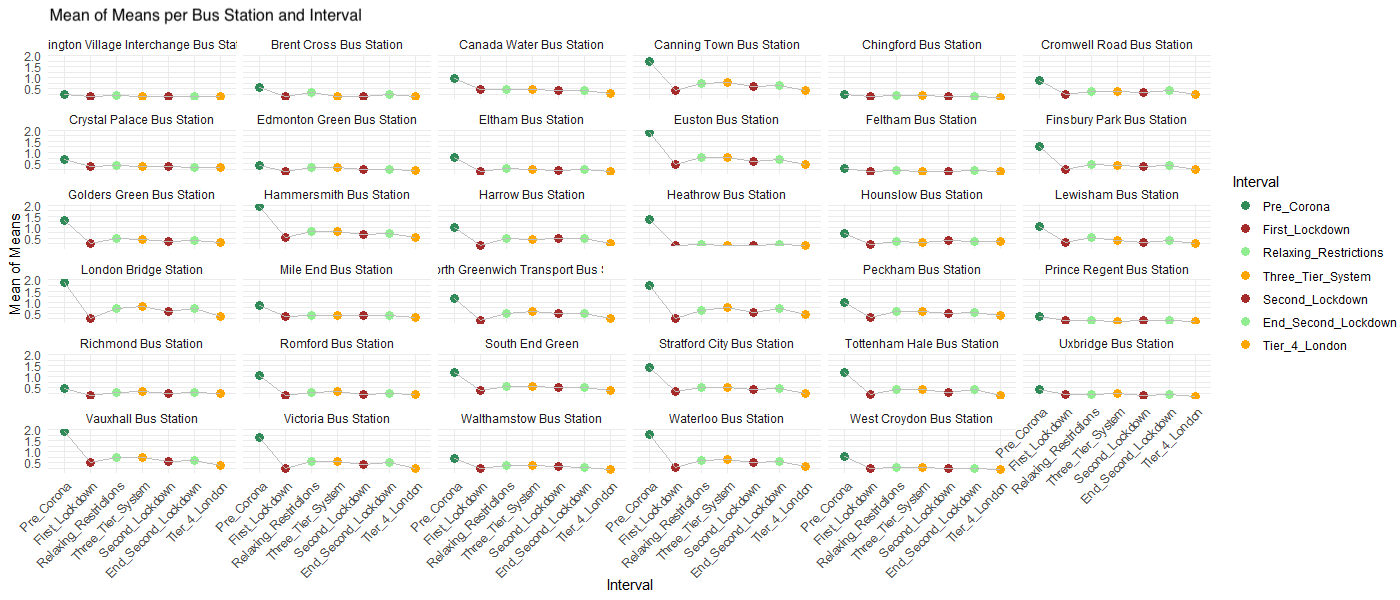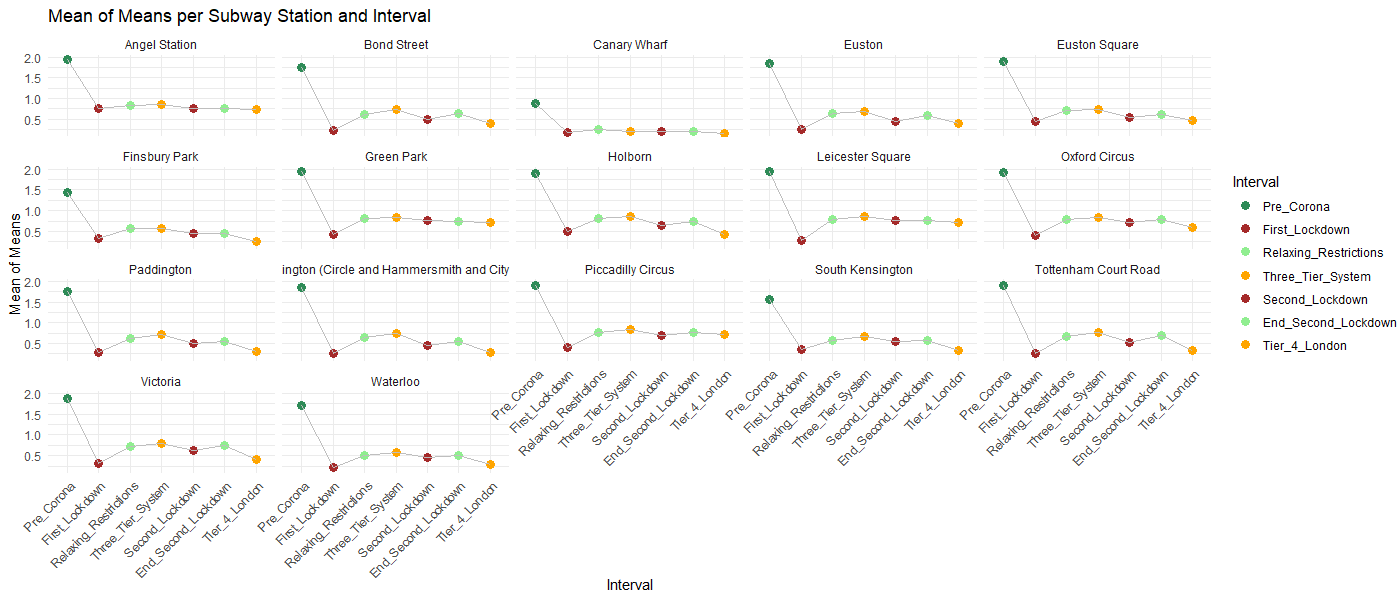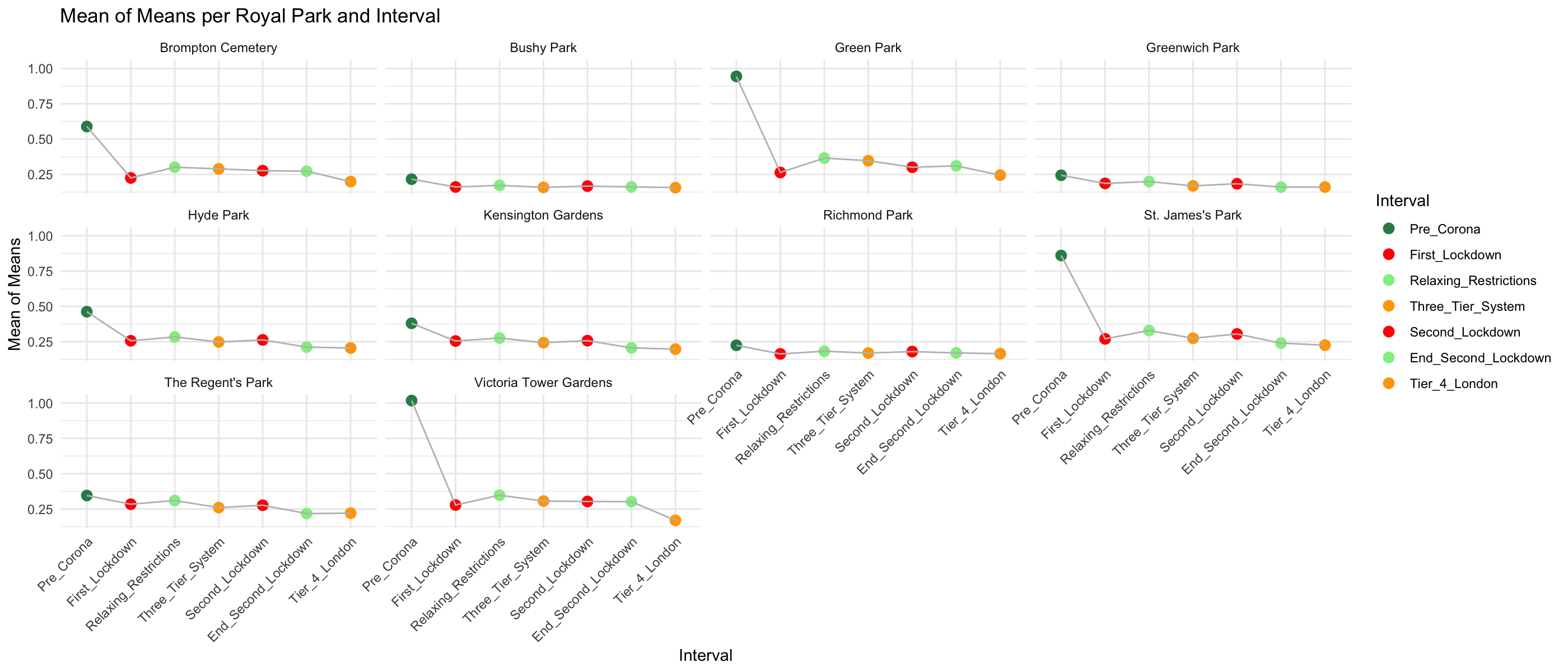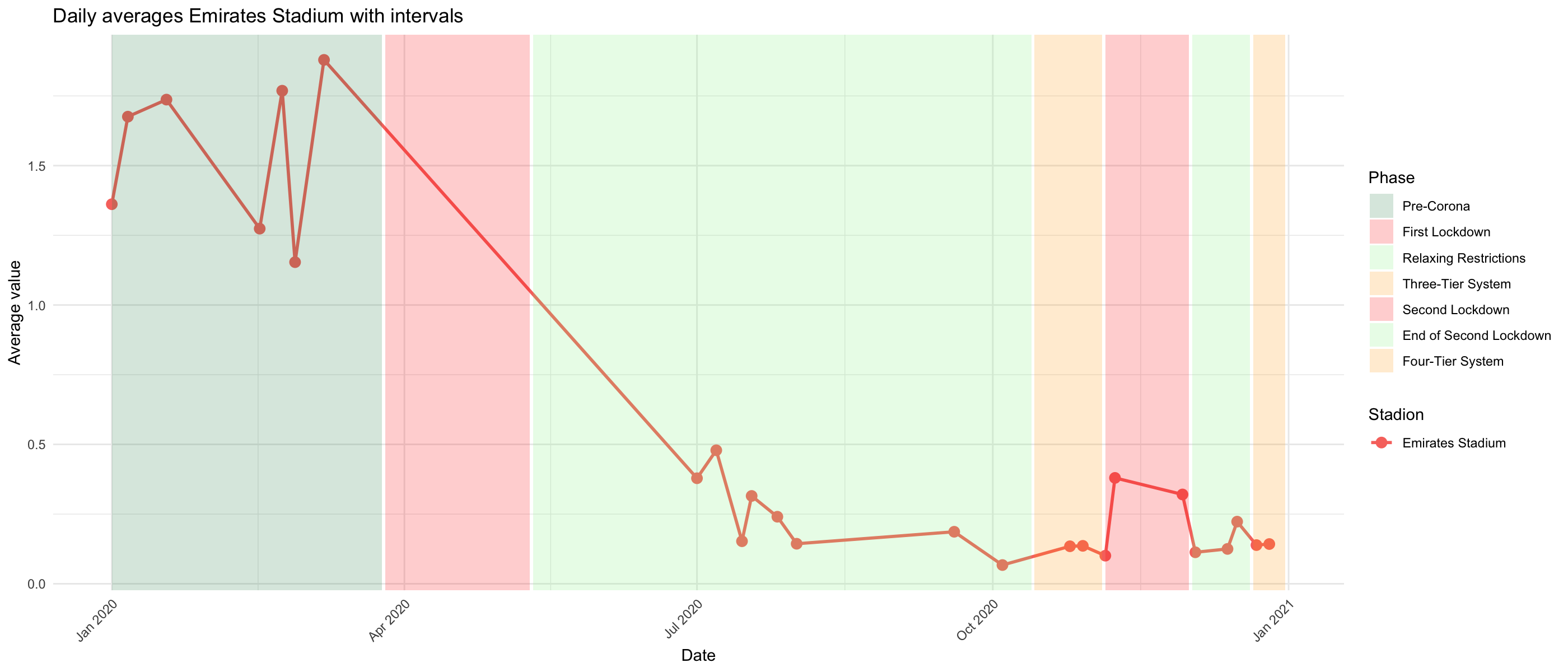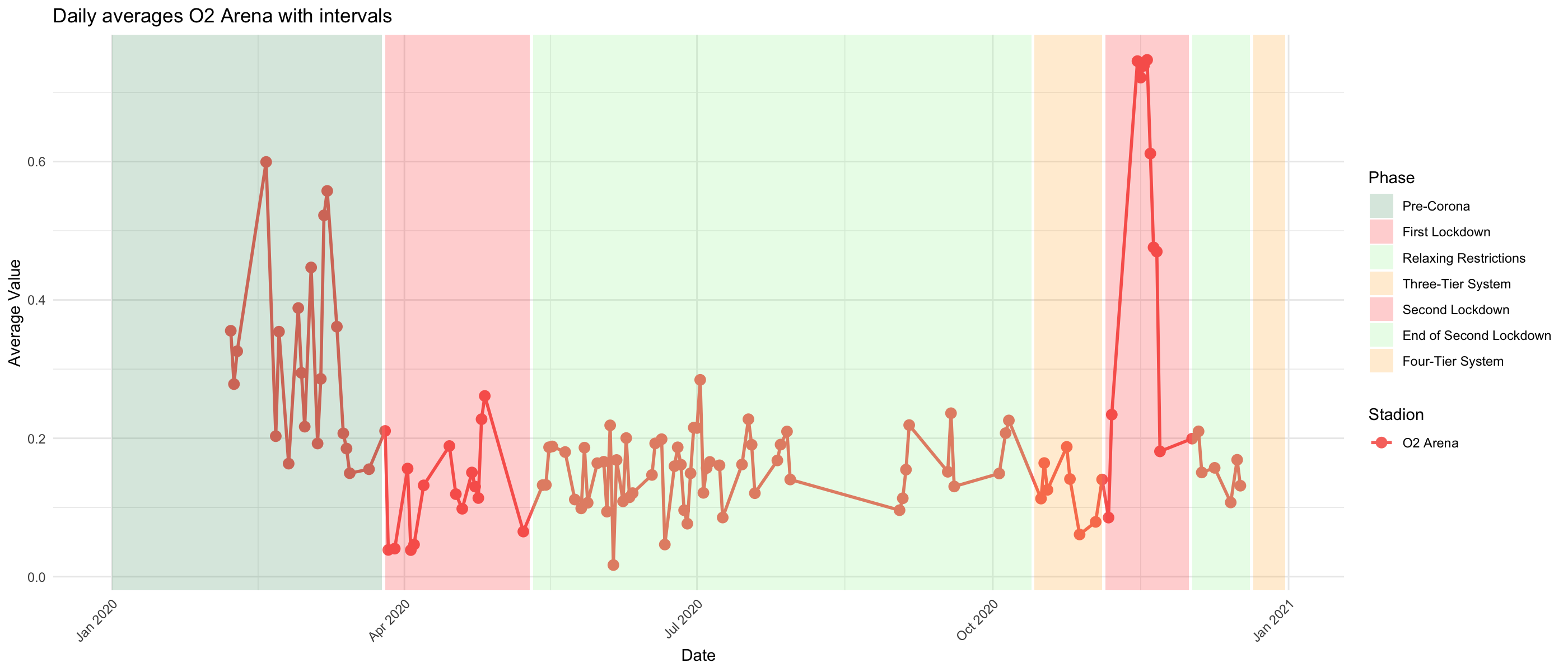Results and Interpretation
The POI analysis highlights the spatial and temporal dynamics of human activity at specific Polygons of Interest (POIs) during different phases of the COVID-19
pandemic. By examining aggregated activity data for categories such as bus stations, subway stations, parks, football stadiums, and big event venues, several key
insights emerge. During the Pre-Corona phase, activity levels were consistently high across most POIs, reflecting regular urban mobility patterns. Locations like
bus stations, subway stations, and football stadiums served as key hubs, exhibiting strong clustering of activity.
In the lockdown phases, a significant reduction in activity was observed across nearly all POI categories. Big event venues and football stadiums experienced the
sharpest declines due to event cancellations and restrictions on large gatherings. Parks, however, displayed a relatively smaller decrease, highlighting their
importance as essential outdoor spaces for recreation. As restrictions eased during the Relaxing Restrictions and Recovery phases, a partial recovery in activity
levels was noted, particularly at transportation hubs like bus and subway stations. Big event venues and football stadiums, however, showed limited recovery as
attendance remained restricted. Parks maintained steadier activity levels compared to other categories, reflecting a shift in human behavior toward outdoor activities.
The analysis also reveals distinct activity patterns within each POI category. Parks and transportation hubs adapted more quickly to relaxed measures, whereas
event-based venues showed prolonged declines. This underscores the varying levels of resilience among POI categories to mobility disruptions. Overall, the POI
analysis highlights the significant impact of COVID-19 on urban mobility and activity. Transportation and outdoor spaces showed greater adaptability, while
event-based venues faced sustained challenges. These insights provide a valuable basis for planning urban recovery strategies and prioritizing infrastructure
resilience in response to future disruptions.
The following key observations stand out:
- Pre-Corona Phase: High activity levels were concentrated in transportation hubs, parks, and event venues, reflecting regular urban mobility patterns. Football stadiums and big event venues served as prominent hotspots for clustering.
- Lockdown Phases: Activity dropped significantly across all POIs, with event venues and football stadiums experiencing the steepest declines due to strict restrictions on gatherings. Parks, however, showed a smaller decrease, highlighting their importance as accessible outdoor spaces.
- Relaxing Restrictions: A gradual recovery was observed, particularly in transportation hubs like bus and subway stations. Parks also maintained relatively steady activity levels, while event venues and stadiums recovered more slowly due to ongoing attendance restrictions.
- Recovery Phases: Activity began to normalize, but significant differences remained between POI categories. Outdoor spaces like parks adapted quickly, while event venues continued to struggle, demonstrating their vulnerability to prolonged restrictions.
These observations underscore the varied impacts of COVID-19 on different POI categories and the importance of resilience planning for future urban disruptions.
